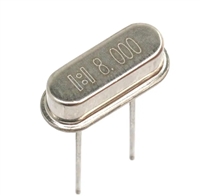LANCAM A/L series (not recommended for new designs)
Functional Description
care” for the purpose of the comparison with all the
memory locations. During a Data Write cycle or a MOV
instruction, data in the specified active Mask register can
also determine which bits in the destination are updated. If
a bit is HIGH in the Mask register, the corresponding bit of
the destination is unchanged.
having the Highest-Priority match or the Next Free
address responds.
Cascading LANCAMs
A Page Address register in each device simplifies vertical
expansion in systems using more than one LANCAM.
This register is loaded with a specific device address
during system initialization, which then serves as the
higher-order address bits. A Device Select register allows
the user to target a specific device within a vertically
cascaded system by setting it equal to the Page Address
Register value, or to address all the devices in a string at
the same time by setting the Device Select value to
FFFFH.
Highest Priority/Multiple Match
The match line associated with each memory address is
fed into a priority encoder where multiple responses are
resolved, and the address of the highest-priority responder
(the lowest numerical match address) is generated. In
LAN applications, a multiple response might indicate an
error. In other applications the existence of multiple
responders may be valid.
Figure 3 shows expansion using a daisy chain. Note that
system flags are generated without the need for external
logic. The Page Address register allows each device in the
vertically cascaded chain to supply its own address in the
event of a match, eliminating the need for an external
priority encoder to calculate the complete Match address
at the expense of the ripple-through time to resolve the
Highest-Priority match. The Full flag daisy-chaining
allows Associative writes using a Move to Next Free
Address instruction, which does not need a supplied
address.
Input Control Signals and Commands
Four input control signals and commands loaded into an
instruction decoder control the LANCAM. Two of the four
input control signals determine the cycle type. The control
signals tell the device whether the data on the I/O bus
represents data or a command, and is input or output.
Commands are decoded by instruction logic and control
moves, forced compares, validity bit manipulations, and
the data path within the device. Registers (Control,
Segment Control, Address, Next Free Address, etc.) are
accessed using Temporary Command Override
instructions. The data path from the DQ bus to/from data
resources (comparand, masks, and memory) within the
device are set until changed by Select Persistent Source
and Destination instructions.
Figure 4 shows an external PLD implementation of a
simple priority encoder that eliminates the daisy chain
ripple-through delays for systems requiring maximum
performance from many CAMs.
After a Compare cycle (caused by either a data write to the
Comparand or Mask registers, a write to the Control
register, or a forced compare), the Status register contains
the address of the Highest-Priority Matching location in
that device, concatenated with its page address, along with
flags indicating internal match, multiple match, and full.
When the Status register is read with a Command Read
cycle, the device with the Highest-Priority Match
responds, outputting the System Match address to the DQ
bus. The internal Match (/MA) and Multiple Match (/MM)
flags are also output on pins. Another set of flags (/MF and
/FF) that are qualified by the match and full flags of
previous devices in the system also are available directly
on output pins, and are independently daisy-chained to
provide System Match and Full flags in vertically
cascaded LANCAM arrays. In such arrays, if no match
occurs during a comparison, read access to the memory
and all the registers except the Next Free register is denied
to prevent device contention. In a daisy chain, all devices
respond to Command and Data Write cycles, depending on
the conditions shown in Table 4 unless the operation
involves the Highest-Priority Match address or the Next
Free address; in which case, only the specific device
6
Rev. 1






 资料手册解读:UC3842参数和管脚说明
资料手册解读:UC3842参数和管脚说明

 一文带你了解无源晶振的负载电容为何要加两颗谐振电容CL1和CL2
一文带你了解无源晶振的负载电容为何要加两颗谐振电容CL1和CL2

 玻璃管保险丝与陶瓷管保险丝:区别与替代性探讨
玻璃管保险丝与陶瓷管保险丝:区别与替代性探讨

 PCF8574资料解读:主要参数分析、引脚说明
PCF8574资料解读:主要参数分析、引脚说明
